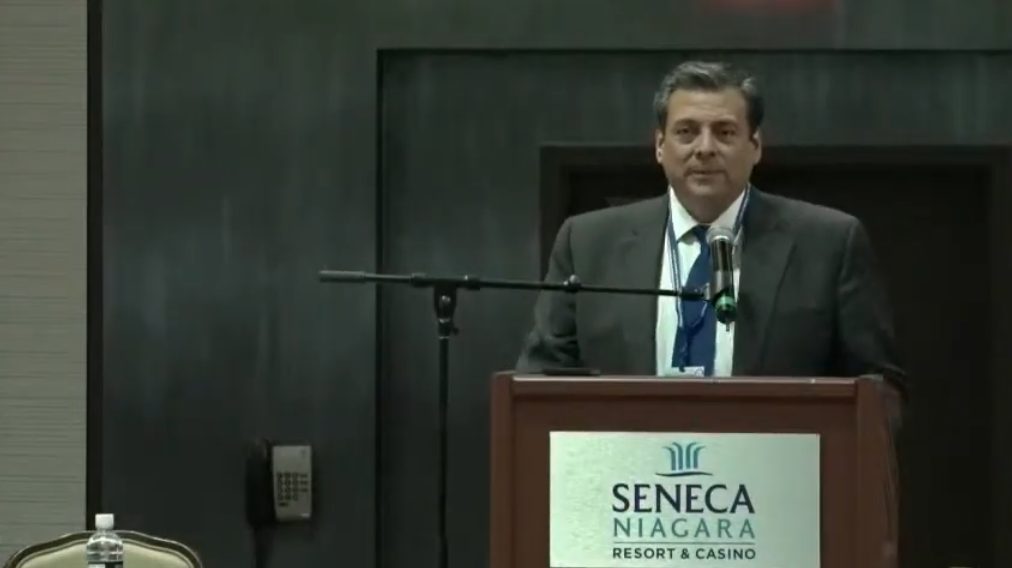
Round 12: The evolution of boxing
By Mauricio Sulaimán – Son of José Sulaimán & President of the WBC
I was present at the Congress of the Association of Boxing Commissions of the United States (ABC), which was at Niagara Falls, in New York.
This group was formed in the 1980s, when some commissioners from the states with the most activity in this sport in that country sought to unite to address priority issues, with the intention of achieving uniformity in regulations and procedures.
The ABC was founded by boxing Greats, like Duane Ford, Sam Macias, Dickie Cole, Arlen Bynum, Greg Sirb and Randy Gordon, among others, who had the vision to see goals and perimeters even further afield, concerning a sport that is complicated to manage, due to the unique model that no other encompasses.
Today’s President Mike Mazzulli has established a leadership and structure which seems to be moving forward with great expectations to achieve the long awaited goal of uniformity , solidarity and reciprocity among all states and tribal nations. The Congress was very well attended and The WBC was proud to be present along with the NABF as a commitment to respect and reciprocity.
In boxing, governing bodies or administrators have absolutely nothing to do with the business of this sport compared to all other.
In American Football there is the NFL; the MLB in baseball; FIFA and the national leagues of each country in soccer, and the NBA in basketball. In mixed martial arts, the UFC is the most powerful league precisely because it handles all aspects of the business. That is the case in all professional sports.
These entities control everything that has to do with their sport, starting with the business; they are the ones who negotiate contracts for television rights, sponsorships, and even sell franchises (teams), and a business model is generated in which they work, under the same scheme and, therefore, have absolute centralized power in making decisions.
Boxing is different. The organizations have absolutely nothing to do with the business, in order to mark a clear division of duties and eliminate conflicts of interest. In boxing, the business is in the hands of the promoters.
This sport has been a great generator of money. Boxing was started informally to bring together people who would gamble, placing bets as two tough guys would fight each without rules, in an act of pure savagery. Boxing eventually took shape and structure, but in a very slow and disorganized way. The rules were very basic and general for many decades.
These fights attracted thousands of people, and at the beginning of the 20th century, it became the most popular sporting event in the United States and England. The heavyweight champion was considered the most powerful human being in the world and was one of the most internationally recognized persons in the world.
Jack Dempsey achieved such popularity that he averaged one hundred thousand fans during three fights in the 1920´s. Next September 2023, the centenary of his legendary fight with Luis Ángel Firpo will be celebrated, where a stadium was built just for the fight, with an attendance of 88,238 spectators, which was held at the so-called Polo Grounds, in New York, US. Don Majeski has begin a task force to commemorate such centennial next year with the goal to make a huge celebration and place a plaque at the exact place where such Polo Grounds firmly stood for a long time.
For decades, the arenas and stadiums were filled, generating million-dollar gates, the box office was a huge success . The business model was very simple, the promoter paid the boxers according to a percentage of the box office. Eventually television arrived, and with it, the signal began to reach millions of people.
Little by little people preferred to watch sports in the comfort of their homes and for free on television.
Boxing became a sport which would produce events with thousands of people in the arenas and millions on the small screen, but the box office began to drop, as TV rights began to be more important sources of income, and that is how the boxing completely changed. A new business model was born.
Many promotions still today have secured the financial success of that event without having to sell a single ticket.
So, pay-per-view came along and once again changed the business model in this sport. Mexico is a perfect example of this phenomenon, after 47 years of broadcasting boxing uninterruptedly, Saturday after Saturday from the Arena Coliseo, Televisa decided to take this sport off the small creen and only show the important fights on pay-per-view.
Mike Tyson and Julio César Chávez were the kings of pay-per-view, but the sport suffered a devastating blow, as exposure decreased, and Mexico suffered nearly 10 years without having it on open TV.
Today there are also streaming and digital platforms under subscription; that is the new transformation that boxing is undergoing and we are still yet to see where this will take us.
The structure of boxing promotion companies has changed so much. The years of Don King and Bob Arum are behind us. Before, boxing promotions were a memorable event, there were long press conferences lasting three or four hours, access to boxers was limited, tickets were collector’s items, since they were printed with the art of the fight; people attended the shows in fancy dress, the shows featured three, four and even five world championship fights!
Today, With the exception of the big two or three mega shows that happen every year, all the others are monotonous, they don’t even name the show anymore, now it’s X vs. Y , the tickets are mostly electronic, the press conferences are all identical, just the fighters change, nothing is said, a boring and basic script is followed and the picture is taken.
Of course, now there is the modality of putting them face to face hoping that they will insult and push each other in order to sensationalize social networks with a scandal.
The day of the event we usually see a main event with a traipsing mediocre supporting card.
Even with all these changes, boxing is going through, there are still blazes of glory, with fights of great global interest, and there is a long list that fans want to see in the near future. Boxing is going through a Golden era with so many talented fighters and champions, with women finally reaching the peak of the sport and with so many options for fans to enjoy boxing cards worldwide several days during the week. However, we are going through a fragile moment which needs attention. Promoters and Networks must understand the need to see the fights fans want to watch, to collaborate with each other and make agreements and to grow the industry of our sport .
We all need to work together, boxing needs to accept changes and innovations , It is time to welcome the changes needed to improve the safety of fighters, but also for the entertainment and growth of the boxing industry.
The technology is there; there are great initiatives, it is a matter of boxing commissions taking a step forward, and welcoming rules and protocols, which through technology would bring important changes with more audience and greater opportunities for everyone.
Did you know…?
The World Boxing Council took a giant step by changing the championship fights from 15 to 12 rounds in 1982, after some years of funding specific studies at the UCLA Hospital in Los Angeles.
These studies gave rise to many changes and improvements in the regulations that, without a doubt, have saved many lives and have improved the quality of life of thousands of fighters, after their retirement from the ring.
Today`s anecdote
Carlos Monzón would have turned 80 on Sunday. One of the great innovations in boxing was the introduction by the WBC of mandatory anti-doping tests after each fight; before that did not exist. When Mantequilla Napoles fought against the Argentine in Paris, in 1974, these tests were just beginning. My dad went to Monzón’s dressing room after the fight to collect the urine sample, he was dehydrated; he begged him not to, because he hadn’t been able to do it for 30 minutes.
Don José very firmly demanded that he did do it, and that he would wait outside his dressing room. Minutes later, Monzón opened the door and handed him the half-full jar, beaming and affable, as he always was with my dad. At that time there was not even a fax, so everything was by mail. About three weeks after the fight, my dad received the letter from the lab with the results. The Monzón test became an anecdotal case since the result of the test was… champagne.
I appreciate your feedback at contact@wbcboxing.com
![]()
test










